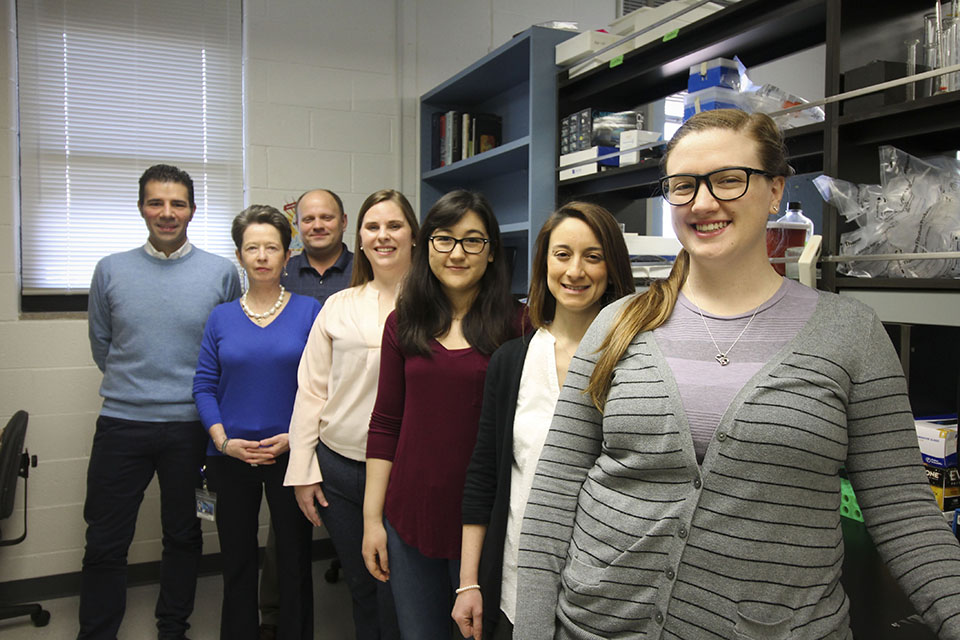Multiple Sclerosis Drug Could Reduce Painful Side Effects of Common Cancer Treatment
Carrie Bebermeyer
Public Relations Director
carrie.bebermeyer@slu.edu
314-977-8015
Reserved for members of the media.
Researchers from Saint Louis University School of Medicine have discovered why many multiple myeloma patients experience severe pain when treated with the anticancer drug bortezomib. The study, which was published on April 27 in the Journal of Experimental Medicine, suggests that a drug already approved to treat multiple sclerosis could mitigate this effect and allow myeloma patients to successfully complete their treatment.
Chemotherapy-induced peripheral neuropathy (CIPN) is a common, painful side effect of many anticancer drugs that can cause patients to discontinue treatment or, because symptoms can persist for years, reduce the quality of life for cancer survivors.
“This growing problem is a major unmet clinical need, because the increased efficacy of cancer therapy has resulted in nearly 14 million cancer survivors in the United States, many suffering from the long-term side effects of CIPN,” says Daniela Salvemini, Ph.D. professor of pharmacology and physiology at Saint Louis University School of Medicine.
Bortezomib, which is widely used to treat multiple myeloma and mantle cell lymphoma, causes CIPN in over 40% of patients but the reasons for this are unclear. Salvemini and colleagues found that bortezomib accelerates the production of a class of molecules called sphingolipids that have previously been linked to neuropathic pain. Rats treated with bortezomib began to accumulate two sphingolipid metabolites, sphingosine 1-phosphate and dihydrosphingosine 1-phosphate, in their spinal cords at the time that they began to show signs of neuropathic pain. Blocking the production of these molecules prevented the animals from developing CIPN in response to bortezomib.
Sphingosine 1-phosphate and dihydrosphingosine 1-phosphate can activate a cell surface receptor protein called S1PR1. Salvemini and colleagues determined that the two metabolites cause CIPN by activating S1PR1 on the surface of specialized nervous system support cells called astrocytes, resulting in neuroinflammation and enhanced release of the excitatory neurotransmitter glutamate.
Drugs that inhibit S1PR1 also prevented rats from developing CIPN in response to bortezomib. One such inhibitor was fingolimod, an orally administered drug approved to treat multiple sclerosis. Importantly, fingolimod did not inhibit bortezomib’s ability to kill myeloma cells. Indeed, fingolimod itself has been reported to inhibit tumor growth and enhance the effects of bortezomib.
“Because fingolimod shows promising anticancer potential and is already FDA-approved,
we think that our findings in rats can be rapidly translated to the clinic to prevent
and treat bortezomib-induced neuropathic pain,” said Salvemini.
Established in 1836, Saint Louis University School of Medicine has the distinction
of awarding the first medical degree west of the Mississippi River. The school educates
physicians and biomedical scientists, conducts medical research, and provides health
care on a local, national and international level. Research at the school seeks new
cures and treatments in five key areas: cancer, liver disease, heart/lung disease,
aging and brain disease, and infectious diseases.


















